In the early stages of its evolution, the Solar system was an apocalyptic spectacle: collisions and destruction were constantly taking place in it, larger protoplanets absorbed smaller ones, heating up to high temperatures and turning into huge balls of molten magma… It was hard to imagine that in a few tens of millions of years one of these balls would become the cradle of life. But even nowadays, in the vicinity of the Sun, there is a region of space where dangerous collisions continue (albeit with less intensity). Humanity learned about it relatively recently, about two hundred years ago. It is now called the Main Asteroid Belt.
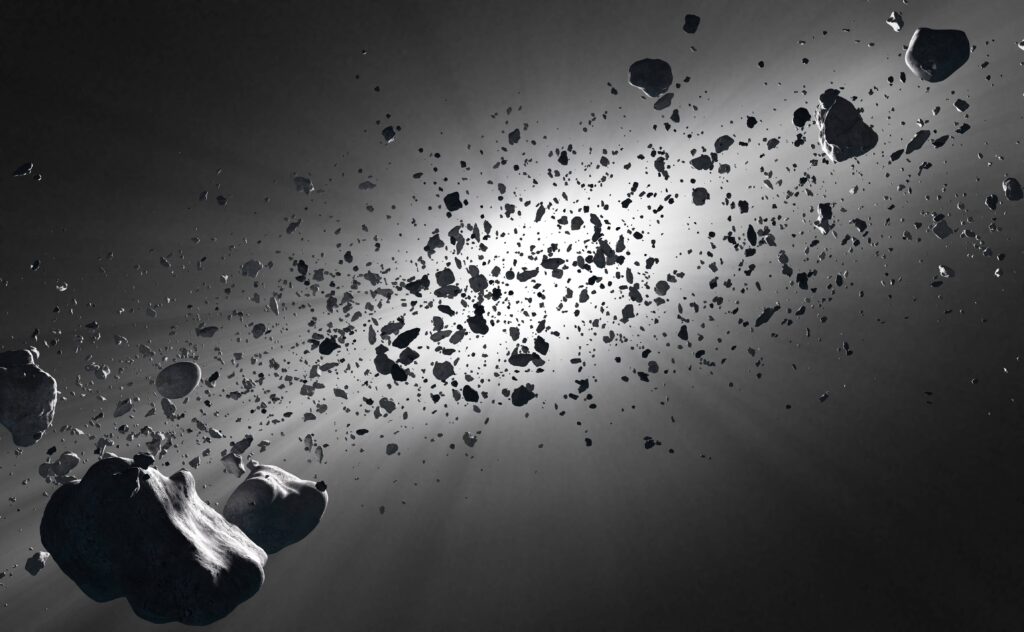
At the end of the eighteenth century, the “family of the Sun” seemed quite small compared to what we know now. In addition to the Sun itself, it consisted of Mercury, Venus, the Earth and Moon, Mars, Jupiter with four moons, Saturn (its “satellite family” was considered the largest at the time — as many as 7, and a ring to boot) and the recently discovered Uranus with two “companions”. The periodicity of Halley and Lexell comets was also proved. This picture seemed quite harmonious, but many scientists noted that it had several flaws. And the biggest one was noticed by the famous astronomer Johannes Kepler in 1596, when he mentioned it in his book Mysterium Cosmographicum.
At that time, the accuracy of astronomical observations was too low to directly measure the distance to the planets. Kepler’s teacher Tycho Brahe was able to estimate them in terms of values “tied” to the average radius of the Earth’s orbit, which later became known as the “astronomical unit” (abbreviated as “AU”). The size of this unit in kilometers was not known even approximately at the time — in fact, the “kilometers” themselves and the metric system in general would be invented much later. But knowing the relative sizes of the radii of planetary orbits, it was easy to see that in the row from Mercury to Mars they grow gradually, and then make a “leap” between Mars and Jupiter. According to Kepler, there was enough space there for another planet.
At the beginning of the century, Professor David Gregory of the University of Edinburgh noticed that the sizes of planetary orbits, expressed in tenths of the distance from the Earth to the Sun, form a series of 4, 7, 10, 15, 52, 95 (these observations were published in 1715, after the scientist’s death). Finally, in 1766, while translating the book Contemplation de la Nature by the French astronomer Charles Bonnet, the German scientist Johann Tietz, better known by his Latinized surname Titius, noted that all these numbers, if 4 is subtracted from them, turn out to be very close to the members of a geometric sequence with a denominator of 2 — with two caveats: For Mercury, the degree of the sequence had to be equal to “minus infinity,” and the fifth term of the series (4+24) did not correspond to any major planet. These reflections became widely known thanks to his compatriot Johann Bode, who cited them with reference to Titius in one of his books and suggested that an unknown planet between Mars and Jupiter would be found. Since then, this regularity of planetary distances has been called the Titius-Bode rule.
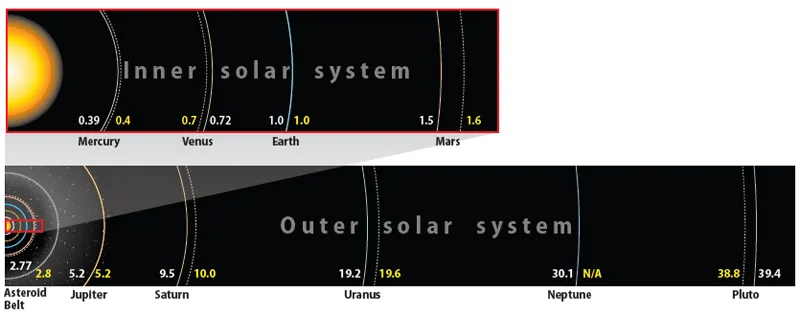
In 1781, Uranus was discovered, and after calculating its orbit, it became obvious that it also fits perfectly into this rule. Astronomers redoubled their efforts to find an unknown object between Mars and Jupiter. In 1796, at a conference in the German city of Gotha, a group of 24 observers led by Franz von Zach was formed, who agreed to coordinate their efforts in this direction and jokingly called themselves the “celestial police.” Members of the group included such well-known scientists as William Herschel (the discoverer of Uranium), Heinrich Olbers, and Charles Messier. But it was not they who eventually made the long-awaited discovery.
“The First Four”
The popular science literature has repeatedly mentioned how 54-year-old professor Giuseppe Piazzi of the University of Palermo celebrated the new nineteenth century at the observatory he had founded ten years earlier, measuring the coordinates of stars in the constellation Taurus. Suddenly, he noticed that one of the stars had shifted significantly relative to the others during his observations. Until then, it was believed that only planets and comets behave this way, but the new object had neither a planetary disk nor a coma and tail (characteristic of comets). The astronomer observed it until the first cloudy night and then “lost” it.
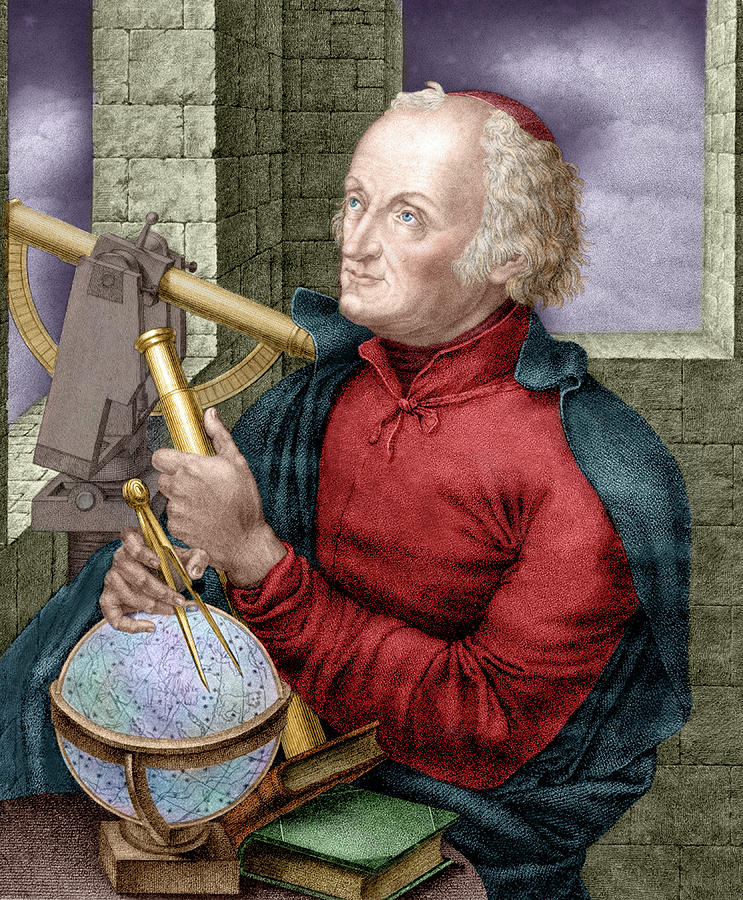
Fortunately, the positional observations were sufficient to calculate the orbit of the unusual body using a new mathematical method of least squares invented by Carl Friedrich Gauss. It lay at an average distance of 2.77 AU from the Sun, exactly where scientists hoped to find the “missed planet.” The only problem was that if the new object had been at least the size of the Moon, it would have been about 20 times brighter, i.e., it would have had a fourth stellar magnitude, and it would have been noticed with the naked eye long ago. Instead of a “full-fledged” planet, astronomers encountered something much smaller.
In March 1802, the aforementioned “celestial policeman” Heinrich Olbers was observing a new object that had already been named Ceres, in honor of the ancient Roman goddess of the harvest. Suddenly he noticed another “moving star” nearby, only slightly fainter. As it turned out later, its orbit had the same average radius, but was more elongated and more inclined to the ecliptic. The scientist suggested that both bodies could be fragments of a larger planet that once existed in this region of space. Consequently, there must be other fragments of it there. And indeed, on September 1, 1804, another body a slightly smaller and in even more elongated orbit was found by the German astronomer Karl Harding, and in March 1807, Olbers “distinguished himself” again. Olbers discovered the fourth “fragment” — the brightest one, as it turned out later. Now we know them as Pallas, Juno, and Vesta.
It became clear that a new class of objects had emerged in astronomy. William Herschel proposed the name “asteroids,” meaning “star-like” (because the telescopes of the time did not allow distinguishing their disks and the objects seemed to be just specks of light). Like Olbers, he believed that the list of these bodies would not be limited to the “first four” and that many more would be discovered someday. Both scientists did not live to see 1845, when asteroid #5 was discovered, and then discoveries of such objects literally fell like from a cornucopia — especially after photography was used for the search.
Time to scatter stones
Gradually, a procedure for registering asteroid discoveries was established: they received a preliminary designation associated with the date of discovery, after determining the orbit, they were given a serial number, and then a name (most often proposed by the discoverer, and he could not name the asteroid after himself — only comets were honored with this honor). Initially, they were named mostly after Greek and Roman goddesses, then male gods were added, and later geographical places, names of scientists, travelers, artists, and even politicians. The thousandth asteroid, found in August 1923, was named Piazzia. As of 2020, more than a million objects of this class have been discovered, and about a third of them are numbered.
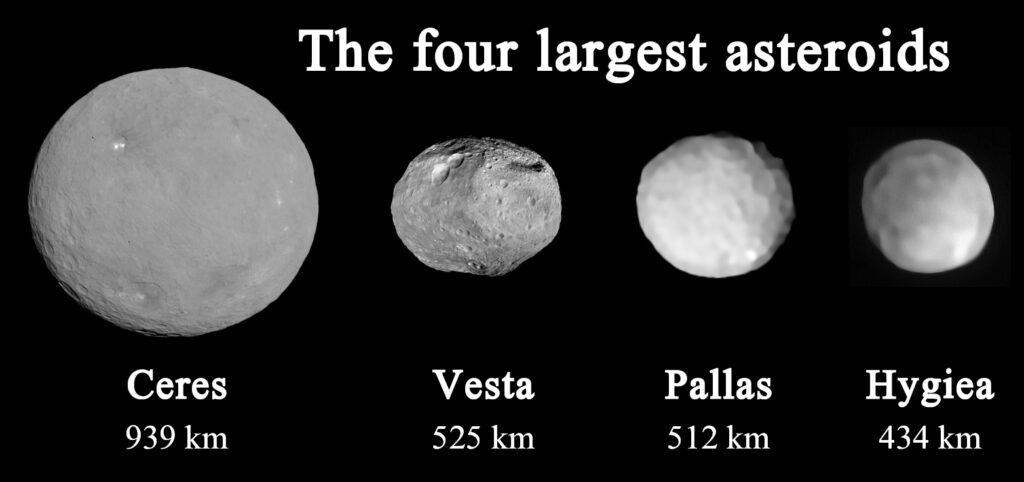
As already mentioned, the first version of the origin of the Asteroid Belt was the destruction of a large planet moving about 2.8 AU from the Sun (it was even named “Phaeton” after a personage of ancient Greek mythology). The most likely candidate for the role of “destroyer” was, of course, Jupiter with its powerful gravitational field, but there were also hypotheses of a grand cosmic collision or even the destruction of Phaeton as a result of the activities of an advanced civilization that existed on its surface.
When in the mid-20th century it became clear that most of the large objects in the space between Mars and Jupiter had already been discovered and that further findings of “celestial pebbles” of kilometer size would hardly change the overall picture, it became possible to estimate their total mass. It turned out that it was about 2.4×10¹⁸ tons, or less than 4% of the Moon’s mass. This was a bit too small for a full-fledged planet so scientists had to look for other explanations of the nature of the Asteroid Belt. The picture became a little clearer after the first computer models of the evolution of the solar system appeared. They indicated that the giant planets were formed not in the orbits they are moving in now: Jupiter was originally located much further from the Sun, while Saturn, Uranus, and Neptune were, on the contrary, closer. However, as a result of mutual gravitational influences 4 billion years ago, they took almost their current position.
Meanwhile, several planet-like bodies formed between the orbits of the Earth and Jupiter, one of which was the present-day Mars (it was more fortunate than others — it was generally spared further perturbations, although it left many “scars” on its surface). They even managed to go through a phase of partial melting and gravitational differentiation, during which metals were concentrated in the interior of the protoplanets, and light minerals “floated” to the surface. Several dozen smaller objects “wandered” in the space between them. Perhaps someday they would still be destined to collide with larger ones and “merge” with them, but the migration of the giant planets led to a completely different scenario.
When Jupiter “jumped” to an orbit closer to the Sun, it began to actively influence objects in the outer regions of the current asteroid belt with its gravity, moving them to highly elongated elliptical trajectories. As a result, the average speed of mutual collisions between the Belt’s bodies increased significantly. The debris formed during these collisions received greater kinetic energy, and instead of falling to the surface of the protoplanets, they mostly began to fly into the surrounding space. Many of these debris (according to some estimates, up to 99% of the total mass) were later ejected from the solar system or fell to the surface of large planets and their satellites, causing the so-called Late Heavy Bombardment and, among other things, enriching the Earth and Mars with water. This evolutionary scenario is now considered the most likely.
Potential threat and source of resources
Since the advent of infrared astronomy, scientists have registered characteristic disks consisting of dust and stone fragments in the vicinity of many stars. Thus, the Asteroid Belt is not an exclusive feature of the Solar System — such structures are quite common in the Universe. Since they are all at different stages of their evolution, studying them gives us a glimpse into our own history.
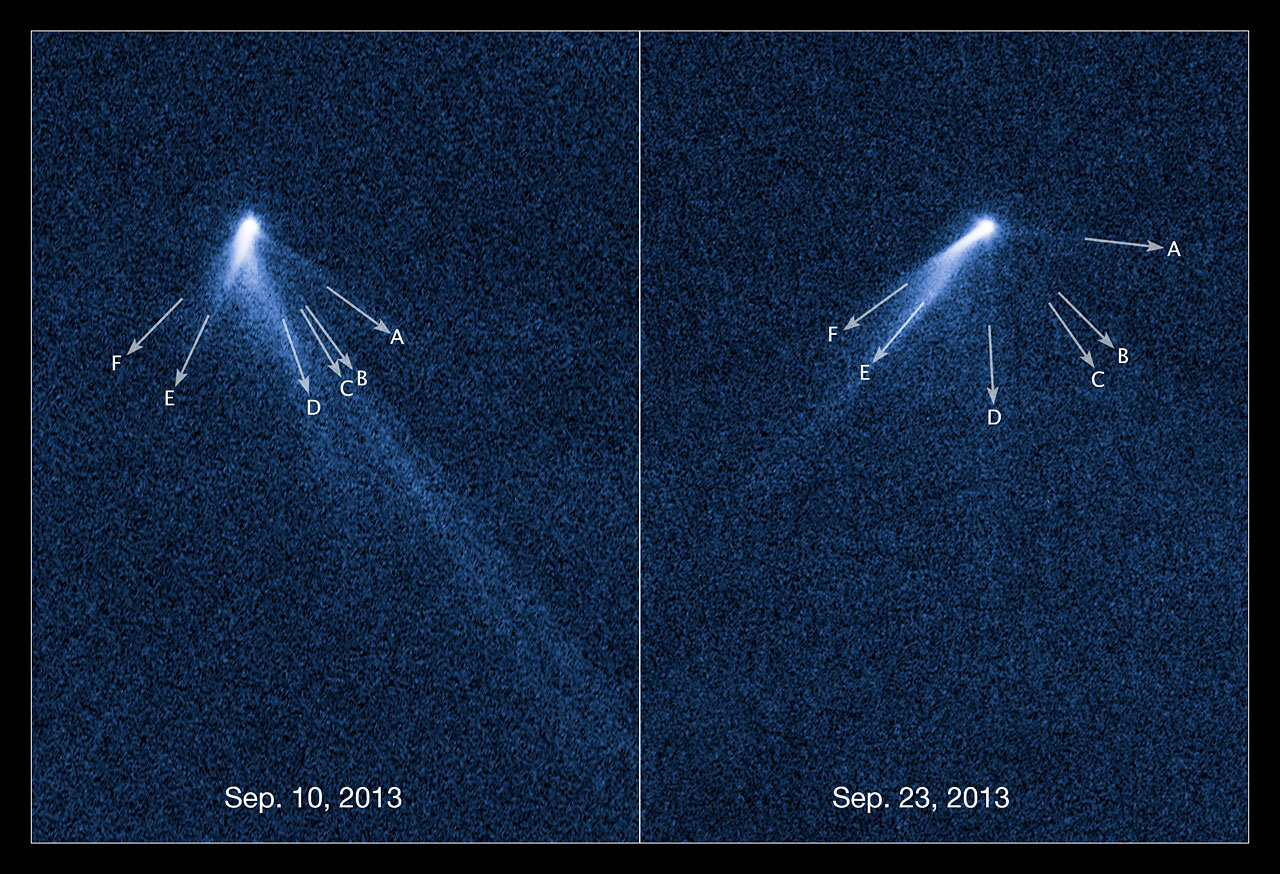
But this is not the only reason why scientists are interested in asteroids. As already mentioned, several “primordial” objects in the Main Belt underwent gravitational differentiation before being destroyed by collisions, actually forming a crust, mantle, and core, like rocky planets like ours. After the impacts of other bodies, all of these components became available for direct study: the deeper layers that we will not be able to reach on Earth for a very long time (if ever), in some “celestial stones” were literally on the surface. This means that by studying them, we will get important information about the internal structure and composition of the big planets.
The same feature of asteroids can make them a source of valuable resources, such as rare metals or isotopes of chemical elements that are present on Earth in very small quantities and are very hard to extract. We wrote about this possibility in previous issues of UST. Private entrepreneurs are already actively working in this area, but large government space agencies are not lagging behind either — for example, NASA is already preparing a spacecraft flight to the large metallic asteroid Psyche.
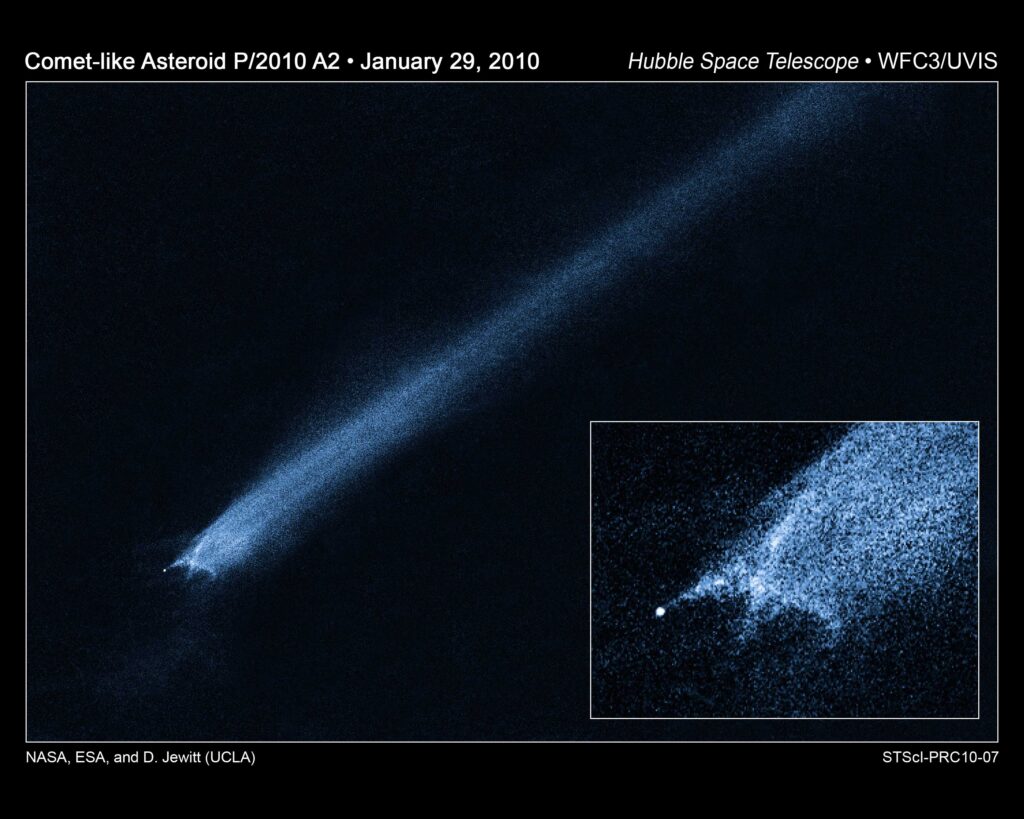
But the most important feature of the Asteroid Belt, as already mentioned, is its “formlessness”. Collisions between bodies still occur there from time to time, creating a large number of debris whose further trajectory cannot be predicted, and therefore it is impossible to rule out that some of them will collide with the Earth in the future. For the first time, such an event was observed in 2010, when astronomers noticed that the object with the index P/2010 A2 had a strange cross-like shape. Perhaps for the same reason, some asteroids sometimes lose their “starry” appearance and form a coma and tail like comets (such phenomena have been regularly observed since the mid-20th century).
Direct research
Many asteroids, under the gravitational influence of large planets, move into orbits that allow them to come close to the Earth. They receive the most attention because they are considered to be potentially the most dangerous in terms of collision with our planet. On the other hand, such objects are quite easy to send a spacecraft to them. Japan has been the most successful in this area: its automatic scouts have already delivered samples of matter from the near-Earth asteroids Itokawa and Ryugu (in 2010 and 2020, respectively). Meanwhile, some fragments of objects of this class were known much earlier — they constantly fall to Earth as meteorites.
However, the Main Belt is also being investigated quite actively, using ground-based telescopes and interplanetary probes. In fact, the first automated spacecraft visited this area of space back in 1972: it was the American Pioneer 10, which was heading for Jupiter. It was specially made relatively small and inexpensive because there were assumptions that it would encounter a large number of grains of sand and even pebbles in the orbit of Mars that would disable it. Fortunately, the concentration of such “space debris” in the probe’s path was low, so it successfully achieved its main goal and became the first artificial object to approach the giant planet.
The first close-up photo of an asteroid (from the flyby trajectory) was taken by the Galileo spacecraft on its way to Saturn. It happened on October 29, 1991, and the object was 18-kilometer Gaspra. Two years later, the same automatic reconnaissance vehicle photographed the 60-kilometer Ida, flying 2400 kilometers to it. In the images, scientists also saw a small satellite of Ida, which was named Daktil. Then came the turn of specialized missions: in 2000, the American NEAR Shoemaker spacecraft entered orbit around the asteroid Eros (which also belongs to the near-Earth objects), and the high-tech Dawn probe, launched in 2007, conducted detailed studies of the two largest bodies of the Main Belt — Vesta and Ceres. After completing its mission and turning off its onboard instruments, it remained orbiting the latter as a monument to the achievements of human civilization.
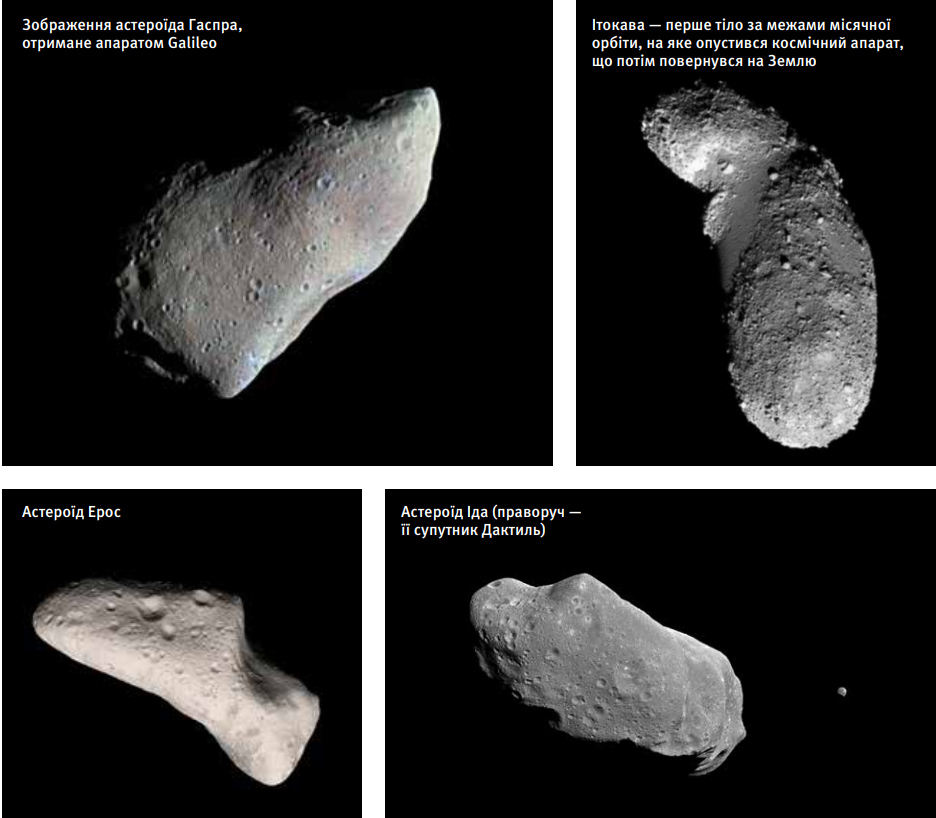
Recently, the OSIRIS-REx spacecraft returned to Earth with samples of the asteroid Bennu. The European Hera mission is being prepared to study a near-Earth object called Didymus. Last year, it was rammed by the DART probe. In this way NASA tested the possibility of changing the trajectory of a celestial body threatening the Earth through kinetic impact. The Lucy spacecraft is already on its way to investigate the so-called Trojan asteroids at Lagrange points L₄ and L₅ in Jupiter’s orbit. As for the Main Belt, in just a few days the Psyche probe will begin its journey to the already mentioned metallic asteroid Psyche. Missions to “celestial stones” are also in the plans of the Chinese space agency (on December 13, 2012, the Chang’e-2 probe approached the asteroid Toutatis), and Japan is not going to stay behind. The once mysterious “empty” space between Mars and Jupiter continues to reveal its secrets…
